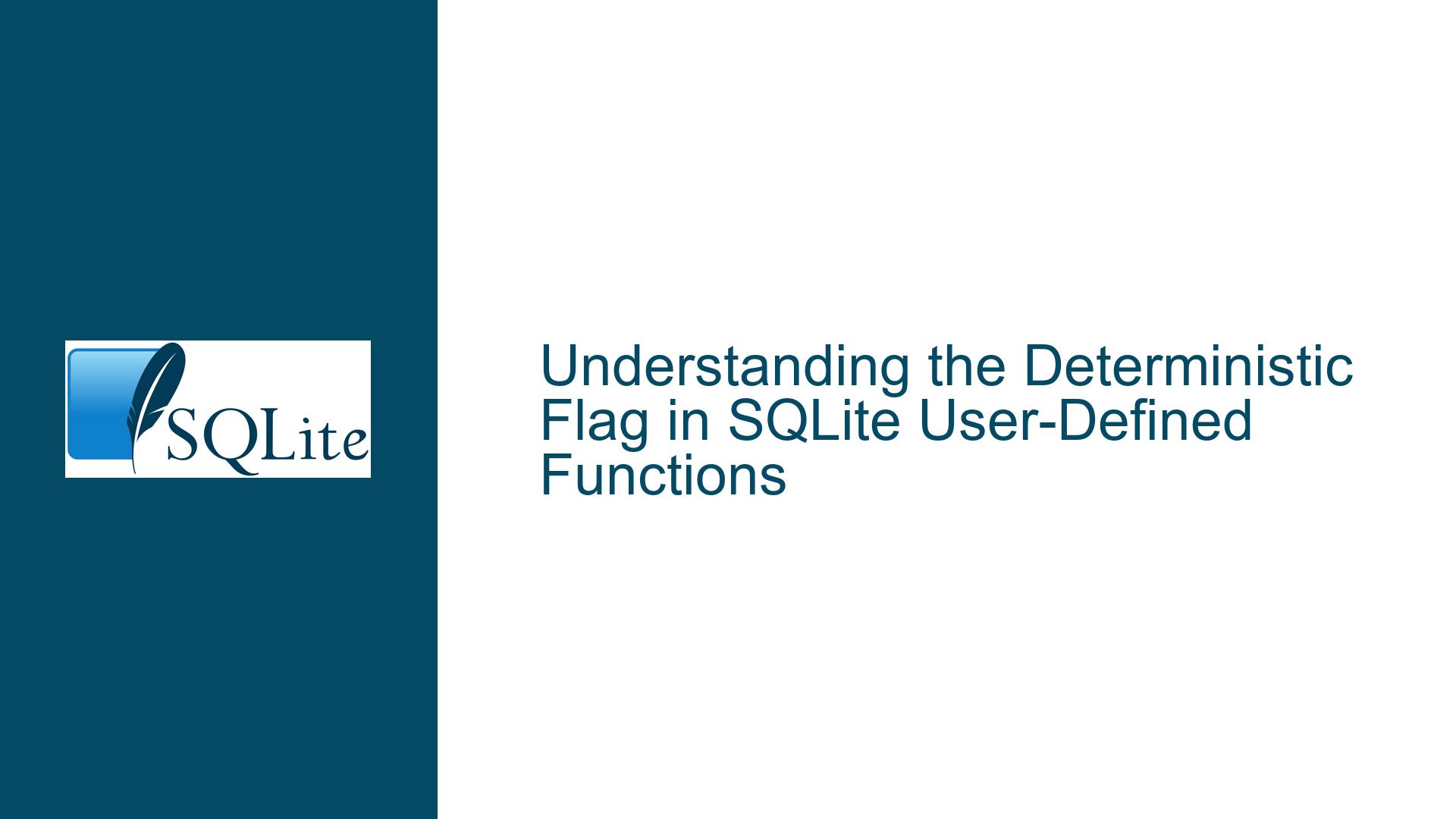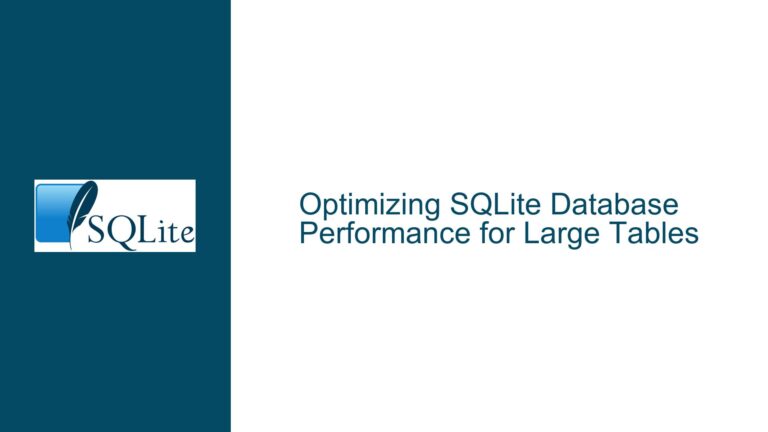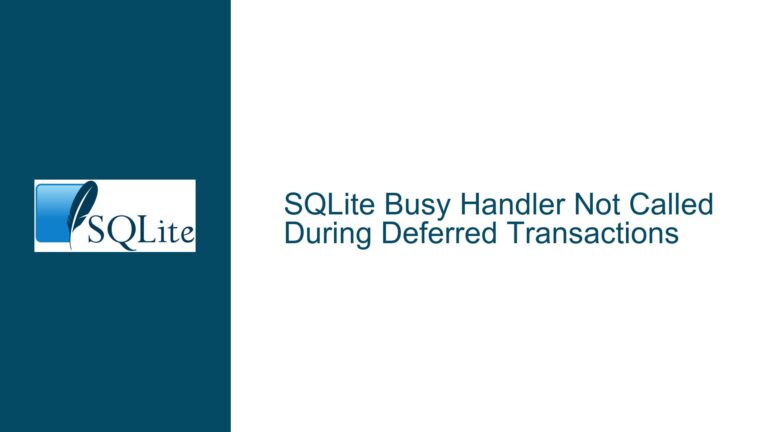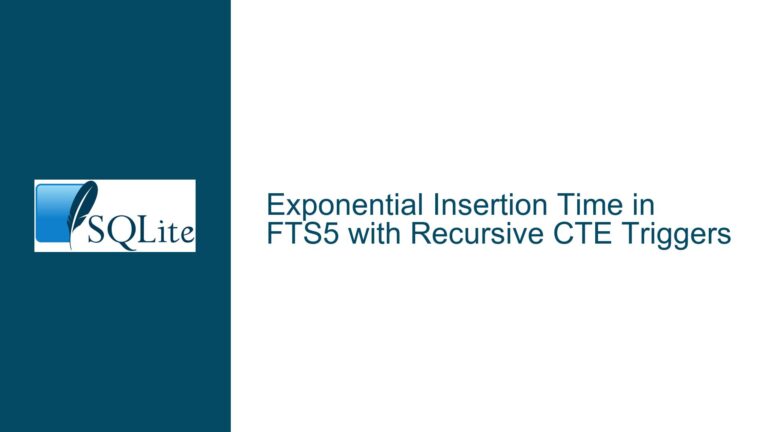the Deterministic Flag in SQLite User-Defined Functions
The Role of Deterministic Flag in UDFs and Query Optimization
The deterministic flag in SQLite is a powerful tool for optimizing user-defined functions (UDFs). When a UDF is marked as deterministic, it signals to the SQLite query planner that the function will always return the same output for the same set of input arguments. This allows the query planner to potentially cache the results of the UDF and avoid redundant calls, which can significantly improve query performance. However, the deterministic flag is not a guarantee that the UDF will only be called once per query or that its results will be cached across multiple queries. The query planner retains full discretion over how and when to optimize based on this flag.
The deterministic flag is particularly useful in scenarios where a UDF is called multiple times within a single query with the same arguments. For example, in a recursive query or a complex common table expression (CTE), the flag can help reduce unnecessary computations. However, it is crucial to understand that the deterministic flag does not control the execution order of queries or the number of times a UDF is invoked. Its sole purpose is to provide the query planner with information that can be used for optimization.
Misusing the deterministic flag, especially in UDFs that produce side effects or rely on external state, can lead to unpredictable behavior. For instance, if a UDF modifies a global variable or interacts with external resources, marking it as deterministic can result in incorrect query results or unexpected side effects. Therefore, the deterministic flag should only be used for pure functions—functions whose output depends solely on their input arguments and have no side effects.
Misconceptions About Deterministic Flag and Side Effects
A common misconception about the deterministic flag is that it can be used to control the execution flow of a query or ensure that a UDF is called a specific number of times. This is not the case. The deterministic flag is purely an optimization hint, and its behavior is entirely at the discretion of the query planner. Relying on it to enforce specific execution patterns can lead to brittle code that breaks when the query planner’s behavior changes, either due to updates in SQLite or differences in query complexity.
Another misconception is that the deterministic flag can be used to cache results across multiple queries or database connections. This is not supported by SQLite. The deterministic flag only applies within the context of a single query, and its effects do not persist beyond the execution of that query. Any attempt to use the flag for cross-query caching or state management is fundamentally flawed and will not work as intended.
Side effects in UDFs further complicate the use of the deterministic flag. A side effect occurs when a function modifies state outside its local scope, such as updating a global variable, writing to a file, or modifying the database. Functions with side effects are inherently non-deterministic because their output can vary even when given the same input, depending on the external state. Using the deterministic flag with such functions is inappropriate and can lead to incorrect query results or inconsistent database states.
Best Practices for Using Deterministic Flag and Avoiding Pitfalls
To use the deterministic flag effectively, it is essential to adhere to best practices and avoid common pitfalls. First and foremost, only mark a UDF as deterministic if it is a pure function—that is, a function whose output depends solely on its input arguments and has no side effects. Pure functions are inherently deterministic and are the only type of functions that should use this flag.
When designing UDFs, avoid relying on global variables or external state. Instead, pass all necessary information as function arguments. This ensures that the function’s behavior is predictable and that it can be safely marked as deterministic. If a UDF must interact with external resources or modify state, it should not be marked as deterministic, and its use should be carefully managed to avoid unintended consequences.
In scenarios where caching or state management is required, consider implementing these features at the application level rather than relying on SQLite’s query planner. For example, you can use an in-memory cache to store the results of expensive computations and reuse them across multiple queries. This approach provides greater control and predictability compared to relying on the deterministic flag.
Finally, thoroughly test any UDFs marked as deterministic to ensure they behave as expected under various conditions. This includes testing with different query plans, database states, and SQLite versions. By following these best practices, you can leverage the deterministic flag to optimize your queries while avoiding the pitfalls associated with misuse.
In summary, the deterministic flag in SQLite is a valuable tool for optimizing UDFs, but it must be used with care and understanding. By adhering to best practices and avoiding common misconceptions, you can harness its power to improve query performance without introducing unintended side effects or brittle code.






